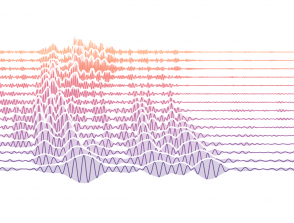Analysis of the eruptive activity of the Stromboli volcano using a network of fibre optics and seismic sensors
Start: 01 October 2024
End: 01 October 2027
Supervisors :
Jean-Philippe Metaxian, Eléonore Stutzmann
Related teams :
Seismology
Status: In progress
Stromboli is primarily characterized by small-volume explosions characterized by explosions ejecting small volumes of incandescent material (scoria) at 100-300 m height at a rate of ~13 events per hour (Ripepe et al., 2008). However, this volcano sporadically produces major and paroxysmal explosions accompanied by magmatic flows in the Sciara del Fuoco graben. These events pose significant threats due to the dispersal of ballistic materials and the emission of lava and pyroclastic flows, which can produce tsunamis directly when flows enter the sea, or indirectly, as a result of landslides (Ripepe and Lacanna, 2024). Effusive and explosive activity at Stromboli is characterized by very long period (VLP) seismic transients (0.01-0.5 Hz) and tremors (~1-4 Hz) (Chouet et al., 1997). These are permanent seismological markers of
the volcanic activity revealing an efficient magma-gas dynamic interaction, where seismic VLPs are linked to the explosive eruptions and tremor to active degassing (puffing) of the magma column.
This thesis proposes to use data from 4km of fibre optics and around a hundred short-period seismic sensors to improve the estimation of the subsurface velocity model using correlation methods (phase cross-correlation and phase weighted stack) (Schimmel et al., 2011). Subsequent work will focus on the classification and location of high-frequency events in the crater and Sciara del Fuoco.





